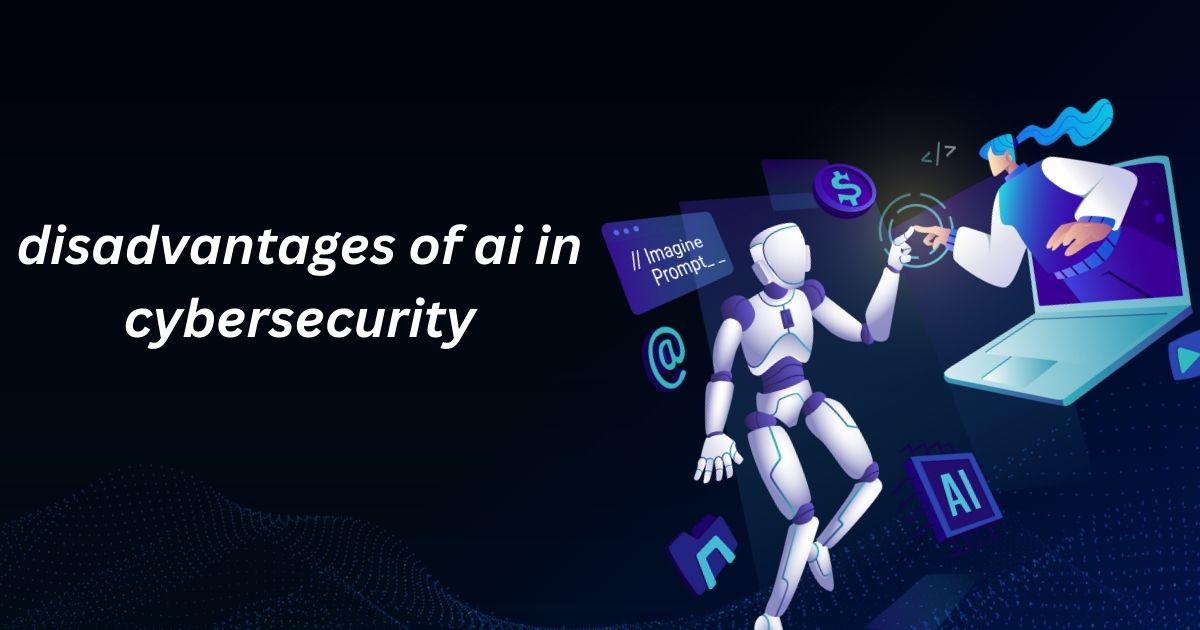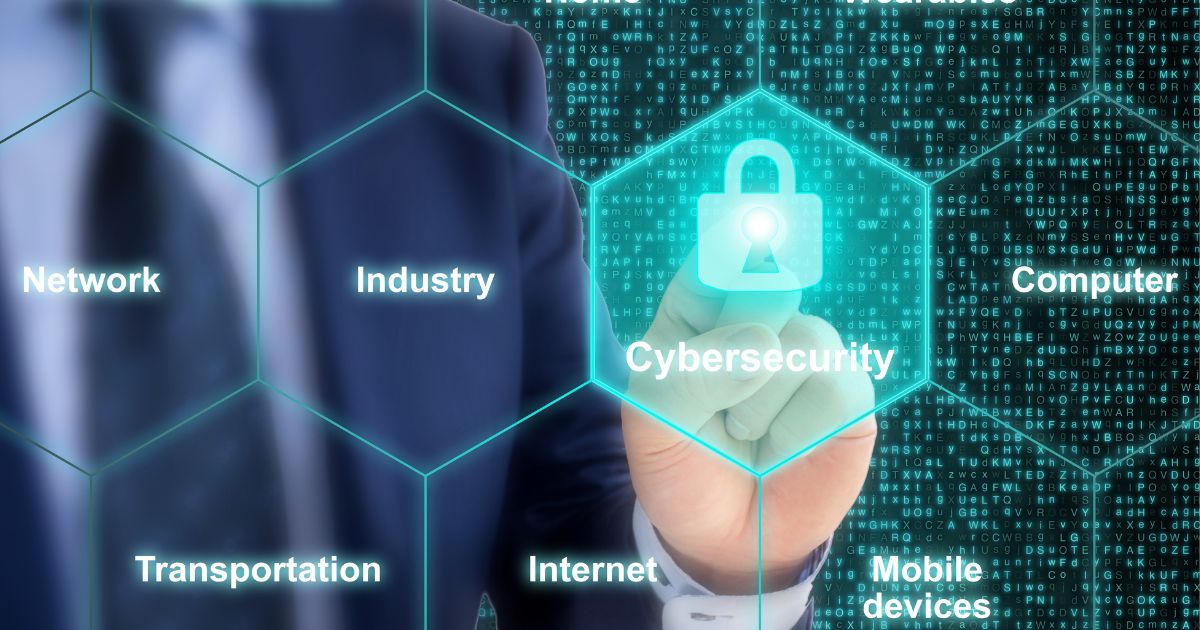
1. Introduction
What is AI in Cybersecurity?
Artificial Intelligence (AI) is revolutionizing the sector of cybersecurity with the resource of automating risk detection, improving response times, and studying from large statistics units to discover risks. AI-powered device can test community web page traffic, examine patterns, and expect ability cyber threats.
In cybersecurity, AI serves to defend structures, networks, and facts via automating repetitive duties, monitoring suspicious sports activities, and detecting anomalies in actual-time. However, like several generation, it comes with worrying conditions, mainly regarding accuracy, price, and the need for human oversight.
Why Discuss the Disadvantages of AI in Cybersecurity?
While AI gives many blessings, it’s vital to understand its boundaries. AI’s speedy integration into cybersecurity has raised worries about its effectiveness, ethical implications, and protection vulnerabilities. Discussing those risks is important because of the fact businesses and agencies want to weigh the dangers and blessings of deploying AI-based totally systems.
Understanding those drawbacks can assist organizations make informed picks and put into effect safeguards that mitigate risks at the same time as maximizing the capacity blessings of AI.
2. Key Takeaways
Quick Overview of AI’s Role in Cybersecurity
AI has end up a cornerstone in cutting-edge cybersecurity, capable of detecting threats quicker and extra successfully than human-based structures. From chance intelligence to automating incident reaction, AI has revolutionized the velocity and scale at which cyber threats are managed.
However, its developing presence additionally opens up new challenges, as AI structures can be exploited or outwitted thru state-of-the-art attackers, and that they frequently require sizable data to characteristic successfully.
Overview of the Main Disadvantages
The primary terrible elements of AI in cybersecurity encompass the occurrence of false positives, overreliance on automatic systems, vulnerability to antagonistic assaults, and ethical concerns round data privacy. AI structures, despite the fact that green, can generate a huge variety of fake alerts, leading to alert fatigue among safety agencies.
Overdependence on AI can also bring about weakened human capabilities and judgment in cybersecurity, even as negative actors make the most AI’s blind spots. Lastly, the huge information collection essential for AI gives privateness risks.
Insert Table #1: Comparison of AI Benefits vs Disadvantages in Cybersecurity
This table will showcase a side-by-side comparison of the benefits and disadvantages of AI in cybersecurity, helping readers understand the trade-offs clearly and concisely.
| Benefits of AI in Cybersecurity | Disadvantages of AI in Cybersecurity |
|---|---|
| Faster threat detection | High rate of false positives |
| Automates repetitive tasks | Expensive to implement and maintain |
| Learns from large datasets | Vulnerable to adversarial attacks |
3. Disadvantages of AI in Cybersecurity
False Positives and Negatives
AI systems in cybersecurity are prone to generating fake positives (flagging valid activities as threats) and fake negatives (failing to stumble on actual threats). False positives result in wasted time and sources as safety groups chase non-troubles, decreasing their performance.
On the opposite hand, false negatives go away systems prone to undetected threats, that can result in full-size records breaches. AI’s reliance on pattern popularity makes it liable to evolving threats that don’t in shape into predefined models, making accuracy a good sized project in cybersecurity applications.
Impact of False Positives
False positives can weigh down protection groups with unnecessary indicators, main to “alert fatigue,” wherein actual threats can be overlooked due to an overabundance of warnings. When AI systems misidentify ordinary sports as threats, the organization wastes valuable time and sources responding to non-troubles. Over time, this reduces the general efficiency of security operations and can erode self belief in AI structures, which may cause crucial threats being disregarded.
False Negatives: Missing Critical Threats
False negatives are even extra risky, as they represent true threats that cross disregarded. AI structures skilled on specific statistics units may also fail to understand new or state-of-the-art attacks that don’t in shape their learning styles.
This blind spot creates great vulnerabilities, as malicious actors can make the most these gaps within the gadget. AI’s inability to absolutely recognise new threats without steady updates means agencies need to remain careful and no longer depend totally on computerized defenses.
Overreliance on AI
Many companies are increasingly relying on AI to manage their cybersecurity, often lowering human oversight. While AI can manage big quantities of statistics and automate repetitive duties, too much reliance on it could weaken an organization’s overall security.
AI systems are best as accurate because the information they’re trained on, and they could war with strange threats or rather nuanced conditions. Relying solely on AI can also cause a discount in human know-how, that is vital for knowledge complicated attacks and responding flexibly to evolving threats.
Lack of Human Oversight
AI, in spite of its abilties, can not replace human judgment, specially whilst dealing with complex cybersecurity challenges. Human oversight is critical to interpret the facts AI provides, make strategic decisions, and apprehend broader contexts that AI may omit. Without right human involvement, companies risk mismanaging threats that fall outdoor the AI machine’s predefined parameters, leading to protection lapses that can be exploited via attackers.
Reduced Human Skills
Over time, relying heavily on AI for cybersecurity obligations can result in a decline in human know-how. As AI takes over more functions, cybersecurity specialists may additionally lose the possibility to refine their talents, main to a workforce that will become overly depending on automated systems.
If AI systems fail or encounter unforeseen threats, the shortage of skilled employees to step in could prove disastrous, exposing the corporation to serious dangers.
Insert Table #2: Real-World Examples of AI Failures in Cybersecurity
This table will include documented cases where AI has failed to protect against cyber threats, emphasizing the real-world impact of AI’s limitations.
| Incident | Description | Impact |
|---|---|---|
| AI missed phishing attack | AI failed to identify a sophisticated phishing attack due to unusual patterns. | Massive data breach occurred |
| False positives in banking sector | AI flagged legitimate transactions as fraud, overwhelming security teams. | Delays in detecting real threats |
4. Ethical and Privacy Concerns
Bias in AI Algorithms
AI algorithms are most effective as top because the statistics they will be educated on. If that statistics is biased, AI structures can reflect and perpetuate the ones biases, doubtlessly inflicting damage in cybersecurity.
For example, biased AI may also disproportionately understand particular types of network website visitors as threats while overlooking others, leaving organizations liable to attacks that don’t in shape into the biased version.
Bias in AI algorithms additionally increases moral issues, in particular in conditions in which selections made thru AI must have a discriminatory impact or fail to guard inclined organizations very well.
How Biases Affect Cybersecurity Decisions
AI’s selection-making in cybersecurity may be skewed with the aid of biased facts devices, which leads to unequal hazard detection and reaction.
If the AI’s schooling records is biased toward fine forms of threats, it might prioritize the ones threats on the equal time as ignoring others, growing blind spots within the enterprise’s safety posture.
This should bring about unfair remedy of positive person groups, left out threats, and moral headaches in coping with sensitive information.
Real-World Impact of Bias in AI
There have been documented times wherein biased AI algorithms did not hit upon wonderful forms of assaults due to the fact the records used for education did not represent a extensive form of risk conditions.
Such biases in AI systems may have excessive real-global results, leaving groups uncovered to vulnerabilities they weren’t organized for. Addressing those biases requires cautious records control and ongoing human oversight to ensure AI stays an powerful tool in cybersecurity.
Data Privacy Risks
AI systems rely carefully on large volumes of facts to function, and in cybersecurity, this regularly includes touchy statistics which consist of client credentials, financial records, and private communications. The large amount of records amassed and processed with the useful resource of AI poses great privacy risks.
Unauthorized get proper of access to to AI databases, or misuse of the facts by using AI systems, ought to result in large privateness breaches. Additionally, improper statistics control and garage practices can bring about records being exposed to capability hackers.
AI and Massive Data Collection
AI’s hunger for records can every now and then result in tremendous information series, that would pose a chance if no longer well managed. AI structures often require big datasets to educate effectively, which includes private or touchy records.
In cybersecurity, this will increase issues approximately how that information is amassed, stored, and used, probably violating privacy rules if mishandled. AI systems may additionally inadvertently collect and examine extra data than essential, exposing customers to greater privacy risks.
Data Breaches and Mismanagement
The extra facts an AI gadget collects, the extra appealing it will become to cybercriminals. If AI systems are not nicely secured, they may be targeted in statistics breaches, exposing touchy data and weakening an agency’s regular safety.
Data mismanagement also can arise while AI strategies facts without enough oversight, main to incorrect coping with of sensitive records or breaches of privacy prison tips at the side of GDPR or HIPAA.
5. Financial and Resource Costs

High Implementation Costs
Implementing AI in cybersecurity is an high priced assignment. Organizations have to invest heavily in AI tools, infrastructure, and employees to manipulate these systems. The preliminary setup prices for AI-powered cybersecurity solutions can be prohibitive, specifically for smaller groups.
In addition to the in advance investment, AI structures require normal updates, tuning, and upkeep, which leads to ongoing fees. High implementation fees make AI less handy for some businesses, restricting its use to huge businesses with great budgets.
Initial Investment
The preliminary investment in AI for cybersecurity may be overwhelming for masses corporations. AI requires powerful computing infrastructure, advanced software program application equipment, and specialized expertise to place into effect and function efficaciously.
These costs are notably better than traditional cybersecurity solutions, growing a barrier for small and medium-sized groups which can struggle to have the funds for AI-powered structures.
Maintenance and Upgrades
Once an AI device is deployed, it doesn’t run on autopilot. Regular updates and upgrades are important to keep AI structures powerful towards evolving cyber threats.
AI models require steady schooling with new facts, and the software program program and hardware systems that useful resource them want maintenance.
This non-prevent need for property drives up the long-term costs of AI in cybersecurity, making it an ongoing monetary burden for companies.
Lack of Skilled AI Professionals
AI in cybersecurity needs professional specialists who can layout, placed into effect, and control AI systems efficaciously. However, there may be currently a shortage of experts inside the subject, main to excessive demand for AI know-how.
This scarcity drives up salaries and makes it challenging for agencies to rent and keep the crucial personnel. Moreover, present day cybersecurity professionals may additionally moreover need greater education to address AI-primarily based structures, which provides to the price and complexity of AI adoption.
Shortage of AI Talent
The international demand for AI understanding a long way exceeds supply, growing a extremely good talents gap in cybersecurity.
Finding specialists with the know-how to develop, educate, and manipulate AI structures is tough and expensive. Organizations regularly ought to pay top rate salaries or outsource AI operations to zero.33-celebration carriers, adding to the overall charge of AI implementation.
Training Costs for Existing Staff
Organizations that select to upskill their contemporary-day employees face greater costs inside the shape of education and improvement.
Teaching conventional cybersecurity professionals a way to art work with AI calls for giant funding in training packages, which may be time-ingesting and pricey. Additionally, while personnel are in training, there can be disruptions in normal cybersecurity operations, in addition adding to costs.
6. FAQs
Can AI Completely Replace Human Cybersecurity Experts?
No, AI can’t completely update human professionals in cybersecurity.
AI is a powerful tool which could automate many tasks, consisting of hazard detection and records analysis, however it lacks the vital questioning, creativity, and judgment that human professionals deliver to the table.
Human oversight is crucial to interpret AI findings, make strategic alternatives, and deal with nuanced conditions that require experience and context past what AI can provide.
What Are the Biggest Risks of Using AI in Cybersecurity?
The biggest risks include faux positives, fake negatives, overreliance on AI structures, high implementation expenses, and ethical concerns including bias and facts privacy risks.
AI can on occasion generate faulty consequences, that might result in overlooked threats or wasted resources.
Additionally, destructive actors could make the maximum vulnerabilities in AI structures, and the information series required for AI poses sizeable privacy risks.
How Can Organizations Mitigate the Disadvantages of AI in Cybersecurity?
Organizations can mitigate AI’s risks through keeping a stability amongst AI and human oversight, regularly updating AI structures to cope with new threats, and making an investment in sturdy records safety protocols.
Training employees to artwork along AI is also important to make sure AI structures are used effectively and that human abilities continue to be sharp.
Additionally, groups need to attention on decreasing biases in AI algorithms and ensuring that statistics privateness is prioritized.
Is AI Worth the Investment in Cybersecurity?
AI is definitely worth the investment for huge agencies that address massive quantities of statistics and face complicated cyber threats.
However, smaller agencies should cautiously weigh the costs and advantages, as the excessive charges related to AI may not normally justify its blessings.
In many instances, a hybrid approach that mixes AI with conventional cybersecurity techniques and human records is the best method for dealing with cyber risks.
7. Conclusion
Balancing AI and Human Expertise
While AI is reworking cybersecurity with its speed and performance, it want to not be regarded as a standalone answer.
A balanced approach that combines AI’s strengths in records evaluation and automation with human judgment, experience, and versatility will motive better popular safety outcomes.
AI is a treasured device, however it’s far handiest at the same time as used along aspect skilled cybersecurity professionals who can provide the oversight and choice-making that AI lacks.
Future of AI in Cybersecurity
The future of AI in cybersecurity is promising, with continuous advancements in AI generation expected to address maximum of the modern boundaries.
Improved algorithms, higher information dealing with practices, and more cutting-edge AI systems will in all likelihood lessen the dangers related to false positives, bias, and data privateness problems.
However, as AI evolves, so too will cyber threats, making it vital for companies to live vigilant and adaptable in their technique to AI-powered cybersecurity.




